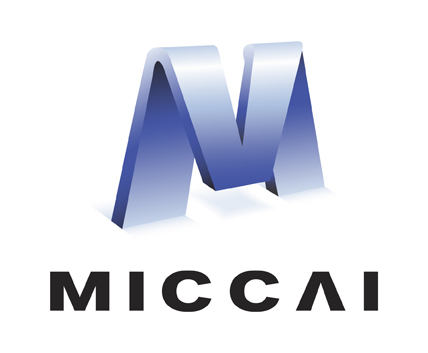Abstract
Multi-organ segmentation requires to segment multiple organs of interest from each image. However, it is generally quite difficult to collect full annotations of all the organs on the same images, as some medical centers might only annotate a portion of the organs due to their own clinical practice. In most scenarios, one might obtain annotations of a single or a few organs from one training set, and obtain annotations of the other organs from another set of training images. Existing approaches mostly train and deploy a single model for each subset of organs, which are memory intensive and also time inefficient. In this paper, we propose to co-train weight-averaged models for learning a unified multi-organ segmentation network from few-organ datasets. Specifically, we collaboratively train two networks and let the coupled networks teach each other on un-annotated organs. To alleviate the noisy teaching supervisions between the networks, the weighted-averaged models are adopted to produce more reliable soft labels. In addition, a novel region mask is utilized to selectively apply the consistent constraint on the un-annotated organ regions that require collaborative teaching, which further boosts the performance. Extensive experiments on three publicly available single-organ datasets LiTS [1], KiTS [8], Pancreas [12] and manually-constructed single-organ datasets from MOBA [7] show that our method can better utilize the few-organ datasets and achieves superior performance with less inference computational cost.
Access this chapter
Tax calculation will be finalised at checkout
Purchases are for personal use only
Similar content being viewed by others
References
Bilic, P., et al.: The liver tumor segmentation benchmark (LITS). arXiv preprint arXiv:1901.04056 (2019)
Chen, H., Dou, Q., Yu, L., Qin, J., Heng, P.A.: VoxresNet: deep voxelwise residual networks for brain segmentation from 3D MR images. NeuroImage 170, 446–455 (2018)
Chen, H., Wang, X., Huang, Y., Wu, X., Yu, Y., Wang, L.: Harnessing 2D networks and 3D features for automated pancreas segmentation from volumetric CT images. In: Shen, D., et al. (eds.) MICCAI 2019. LNCS, vol. 11769, pp. 339–347. Springer, Cham (2019). https://doi.org/10.1007/978-3-030-32226-7_38
Chen, L.C., Zhu, Y., Papandreou, G., Schroff, F., Adam, H.: Encoder-decoder with atrous separable convolution for semantic image segmentation. In: Proceedings of the European Conference on Computer Vision (ECCV), pp. 801–818 (2018)
Dmitriev, K., Kaufman, A.E.: Learning multi-class segmentations from single-class datasets. In: Proceedings of the IEEE Conference on Computer Vision and Pattern Recognition, pp. 9501–9511 (2019)
Ge, Y., Chen, D., Li, H.: Mutual mean-teaching: pseudo label refinery for unsupervised domain adaptation on person re-identification. arXiv preprint arXiv:2001.01526 (2020)
Gibson, E., et al.: Automatic multi-organ segmentation on abdominal CT with dense V-networks. IEEE Trans. Med. Imaging 37(8), 1822–1834 (2018)
Heller, N., et al.: The kits19 challenge data: 300 kidney tumor cases with clinical context, CT semantic segmentations, and surgical outcomes. arXiv preprint arXiv:1904.00445 (2019)
Pan, X., Luo, P., Shi, J., Tang, X.: Two at once: enhancing learning and generalization capacities via IBN-net. In: Proceedings of the European Conference on Computer Vision (ECCV), pp. 464–479 (2018)
Papandreou, G., Chen, L.C., Murphy, K.P., Yuille, A.L.: Weakly-and semi-supervised learning of a deep convolutional network for semantic image segmentation. In: Proceedings of the IEEE International Conference on Computer Vision, pp. 1742–1750 (2015)
Ronneberger, O., Fischer, P., Brox, T.: U-Net: convolutional networks for biomedical image segmentation. In: Navab, N., Hornegger, J., Wells, W.M., Frangi, A.F. (eds.) MICCAI 2015. LNCS, vol. 9351, pp. 234–241. Springer, Cham (2015). https://doi.org/10.1007/978-3-319-24574-4_28
Simpson, A.L., et al.: A large annotated medical image dataset for the development and evaluation of segmentation algorithms. arXiv preprint arXiv:1902.09063 (2019)
Tarvainen, A., Valpola, H.: Mean teachers are better role models: weight-averaged consistency targets improve semi-supervised deep learning results. In: Advances in Neural Information Processing Systems, pp. 1195–1204 (2017)
Zhang, H., et al.: Context encoding for semantic segmentation. In: Proceedings of the IEEE Conference on Computer Vision and Pattern Recognition, pp. 7151–7160 (2018)
Zhang, Y., Xiang, T., Hospedales, T.M., Lu, H.: Deep mutual learning. In: Proceedings of the IEEE Conference on Computer Vision and Pattern Recognition, pp. 4320–4328 (2018)
Zhao, H., Shi, J., Qi, X., Wang, X., Jia, J.: Pyramid scene parsing network. In: Proceedings of the IEEE Conference on Computer Vision and Pattern Recognition, pp. 2881–2890 (2017)
Zhou, Y., et al.: Prior-aware neural network for partially-supervised multi-organ segmentation. In: Proceedings of the IEEE International Conference on Computer Vision, pp. 10672–10681 (2019)
Acknowledgements
This work is supported in part by the General Research Fund through the Research Grants Council of Hong Kong under Grants CUHK14208417, CUHK14239816, CUHK14207319, in part by the Hong Kong Innovation and Technology Support Programme (No. ITS/312/18FX), in part by the National Natural Science Foundation of China (No. 81871508; No. 61773246), in part by the Taishan Scholar Program of Shandong Province of China (No. TSHW201502038), in part by the Major Program of Shandong Province Natural Science Foundation (ZR2019ZD04, No. ZR2018ZB0419).
Author information
Authors and Affiliations
Corresponding authors
Editor information
Editors and Affiliations
Rights and permissions
Copyright information
© 2020 Springer Nature Switzerland AG
About this paper
Cite this paper
Huang, R., Zheng, Y., Hu, Z., Zhang, S., Li, H. (2020). Multi-organ Segmentation via Co-training Weight-Averaged Models from Few-Organ Datasets. In: Martel, A.L., et al. Medical Image Computing and Computer Assisted Intervention – MICCAI 2020. MICCAI 2020. Lecture Notes in Computer Science(), vol 12264. Springer, Cham. https://doi.org/10.1007/978-3-030-59719-1_15
Download citation
DOI: https://doi.org/10.1007/978-3-030-59719-1_15
Published:
Publisher Name: Springer, Cham
Print ISBN: 978-3-030-59718-4
Online ISBN: 978-3-030-59719-1
eBook Packages: Computer ScienceComputer Science (R0)





